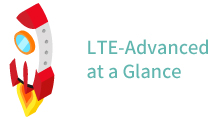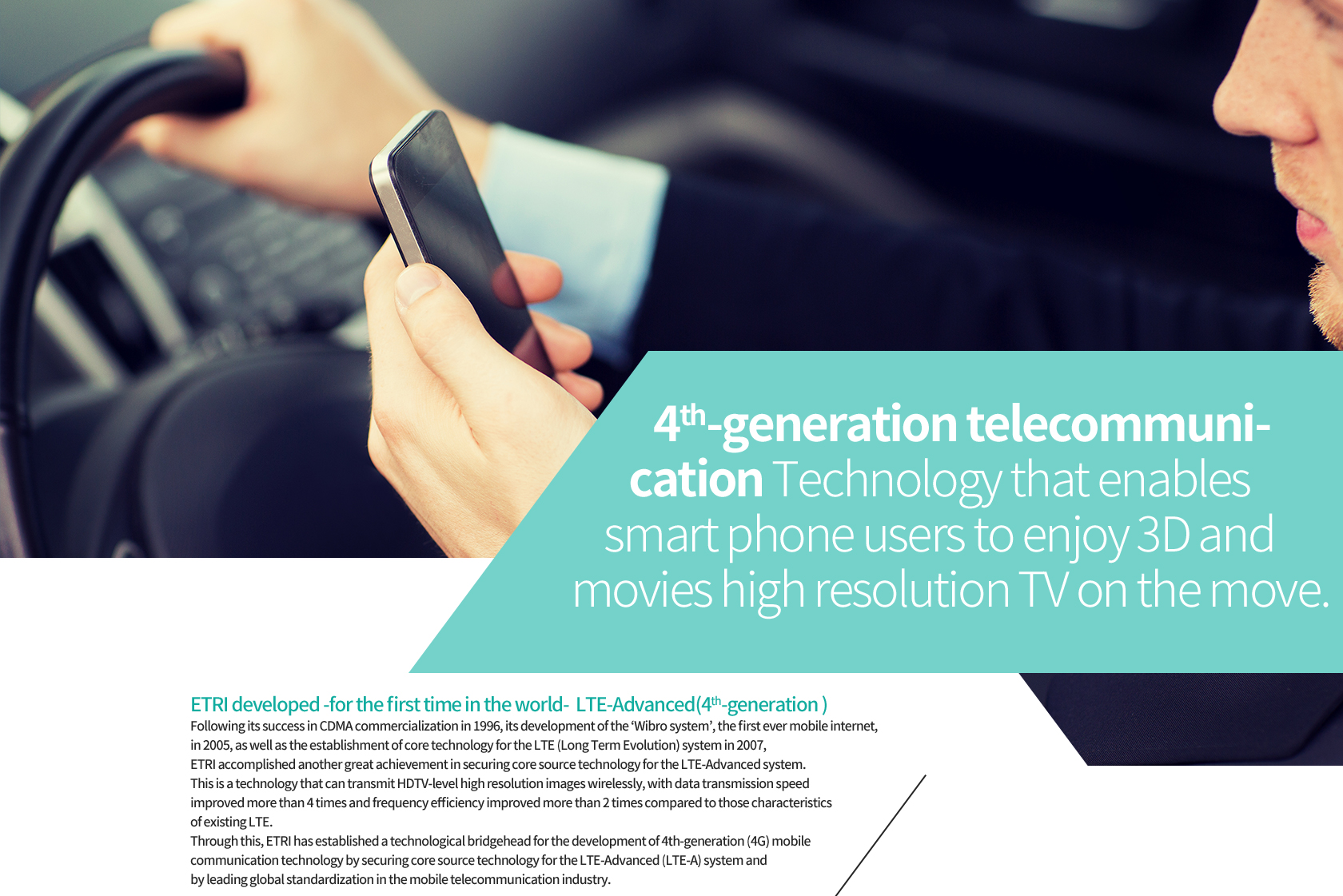
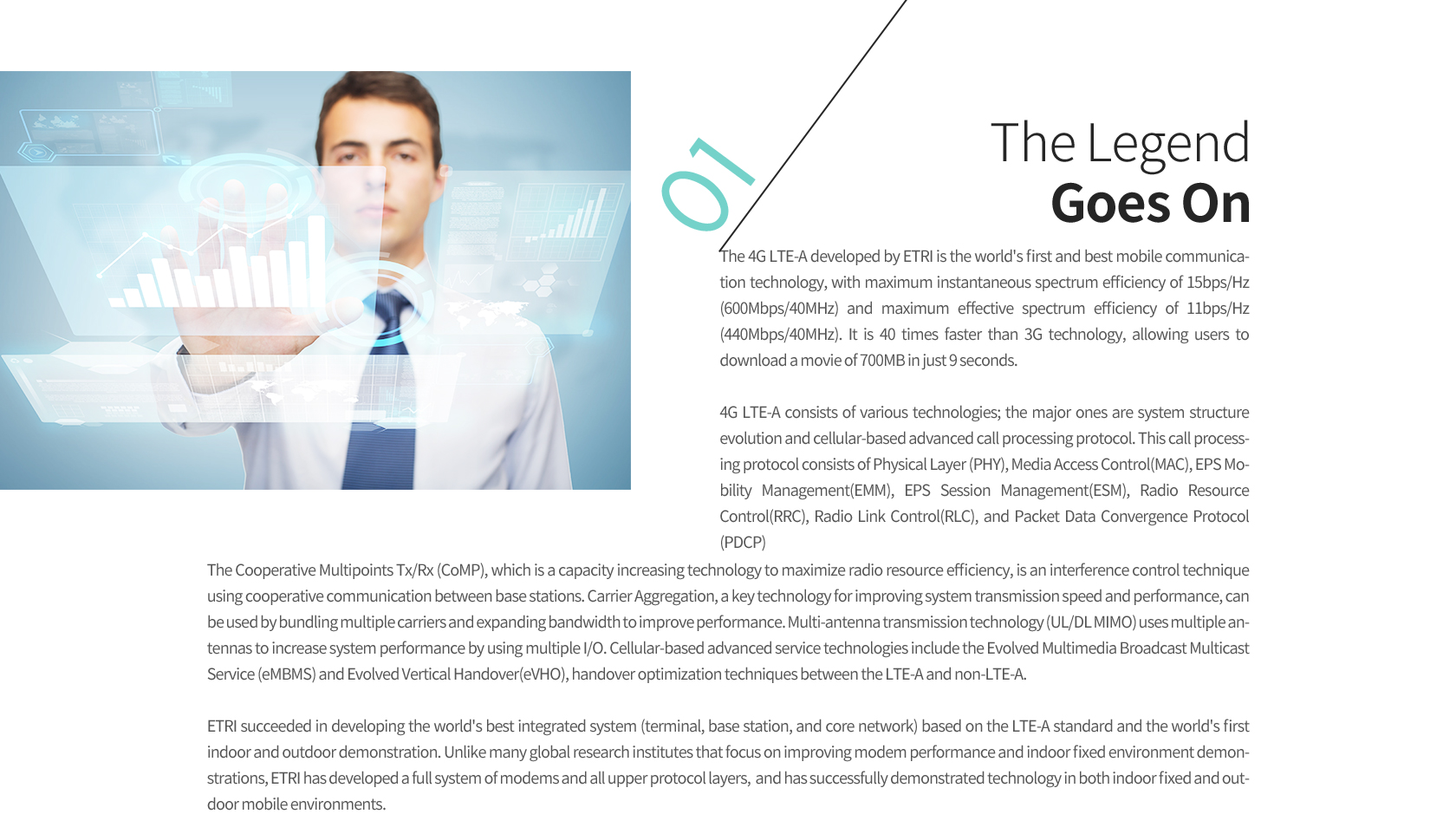
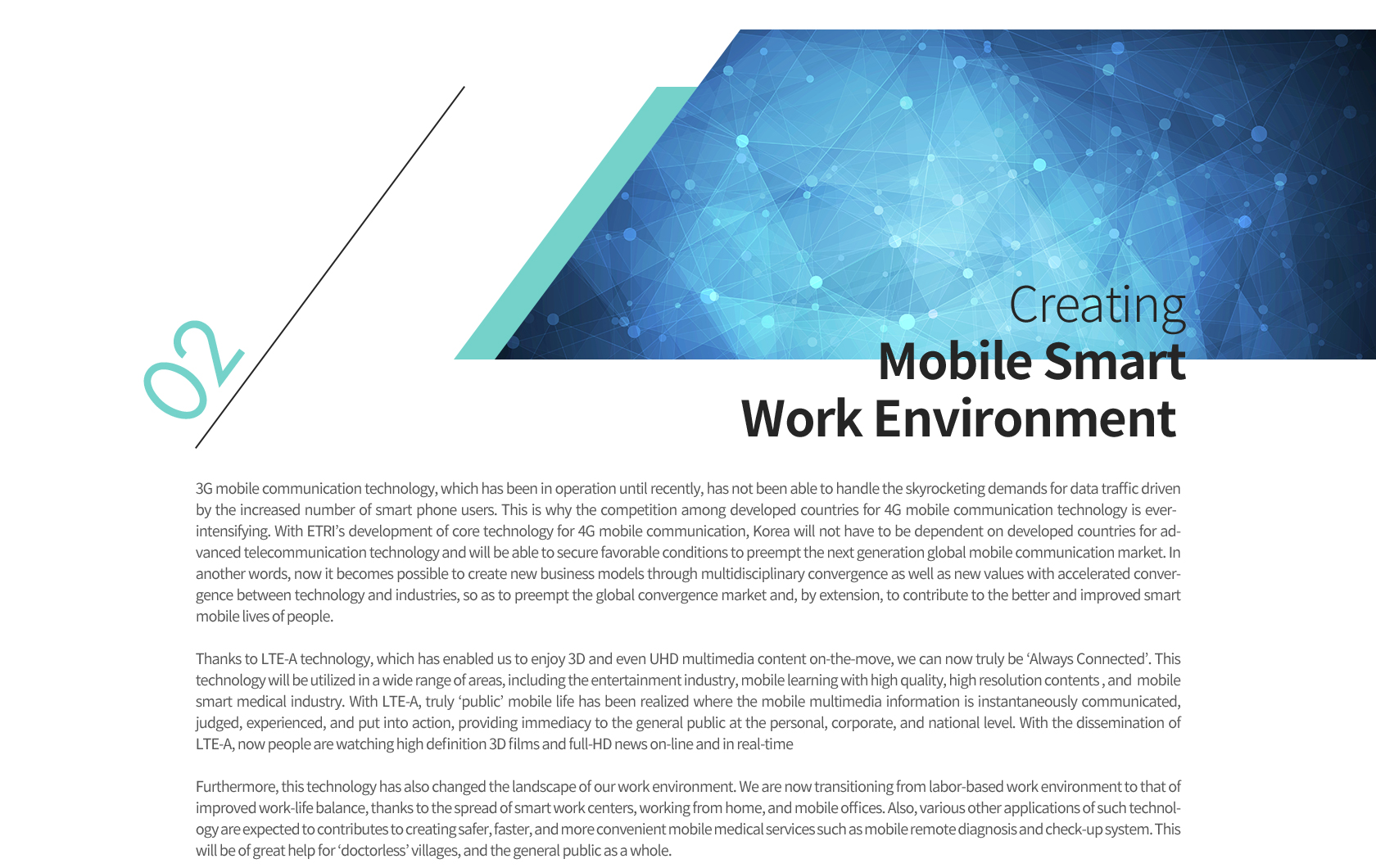
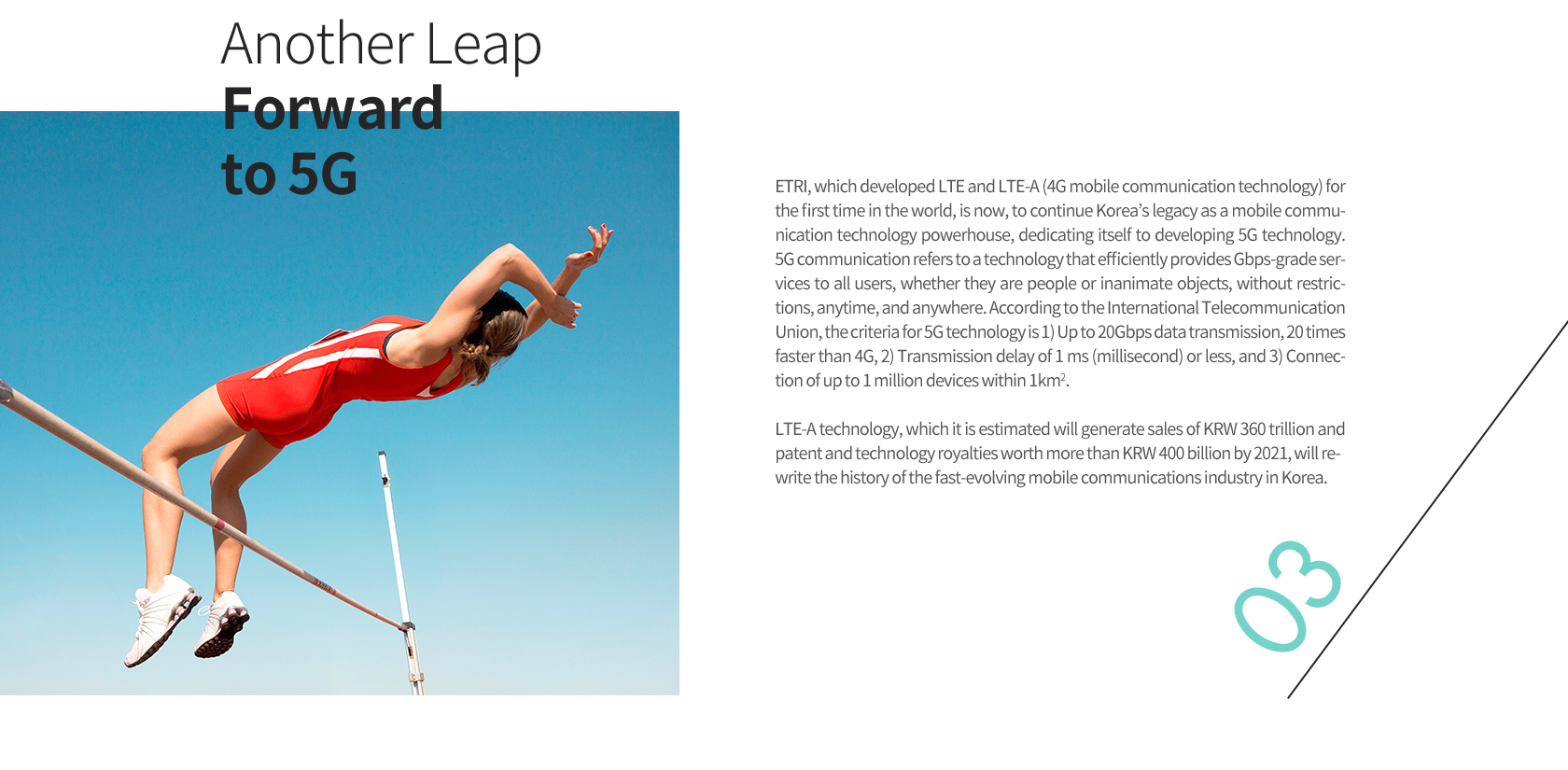
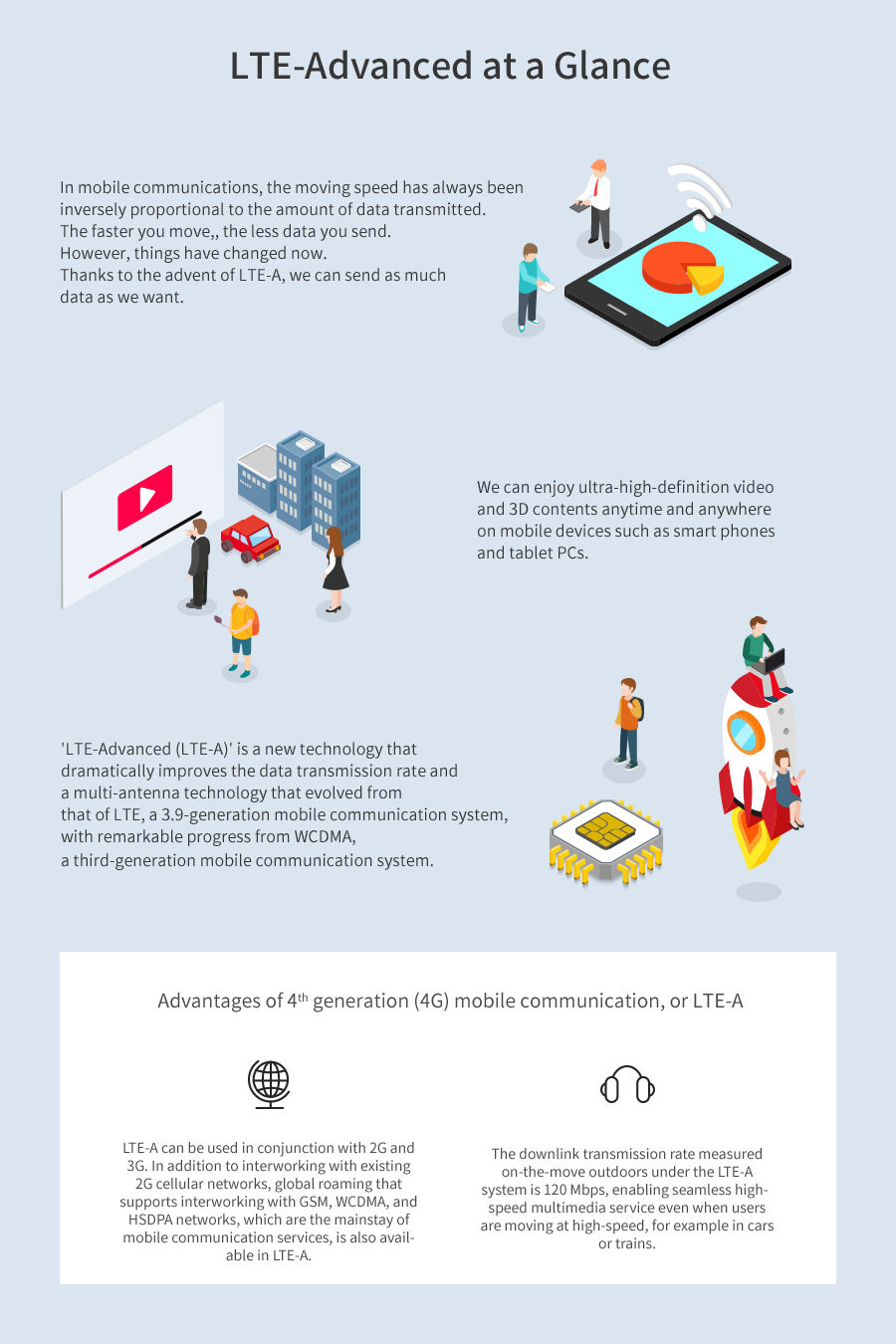
4th-generation telecommunication technology that enables
smart phone users to enjoy 3D movies and high resolution TV on the move.
ETRI developed—for the first time in the world—LTE-Advanced(4th-generation)
Following its success in CDMA commercialization in 1996, its development of the ‘Wibro system’, the first ever mobile internet, in 2005, as well as the establishment of core technology for the LTE (Long Term Evolution) system in 2007, ETRI accomplished another great achievement in securing core source technology for the LTE-Advanced system. This is a technology that can transmit HDTV-level high resolution images wirelessly, with data transmission speed improved more than 4 times and frequency efficiency improved more than 2 times compared to those characteristics of existing LTE. Through this, ETRI has established a technological bridgehead for the development of 4th-generation (4G) mobile communication technology by securing core source technology for the LTE-Advanced (LTE-A) system and by leading global standardization in the mobile telecommunication industry.

01
The Legend
Goes On
The 4G LTE-A developed by ETRI is the world's first and best mobile communication technology, with maximum instantaneous spectrum efficiency of 15bps/Hz (600Mbps/40MHz) and maximum effective spectrum efficiency of 11bps/Hz (440Mbps/40MHz). It is 40 times faster than 3G technology, allowing users to download a movie of 700MB in just 9 seconds.
4G LTE-A consists of various technologies; the major ones are system structure evolution and cellular-based advanced call processing protocol. This call processing protocol consists of Physical Layer (PHY), Media Access Control (MAC), EPS Mobility Management (EMM), EPS Session Management (ESM), Radio Resource Control (RRC), Radio Link Control (RLC), and Packet Data Convergence Protocol (PDCP).
The Cooperative Multipoints Tx/Rx (CoMP), which is a capacity increasing technology to maximize radio resource efficiency, is an interference control technique using cooperative communication between base stations. Carrier Aggregation, a key technology for improving system transmission speed and performance, can be used by bundling multiple carriers and expanding bandwidth to improve performance. Multi-antenna transmission technology (UL/DL MIMO) uses multiple antennas to increase system performance by using multiple I/O. Cellular-based advanced service technologies include the Evolved Multimedia Broadcast Multicast Service (eMBMS) and Evolved Evolvedadvanced Vertical Handover((eVHO), a handover optimization techniques between LTE-A and non-LTE-A).
ETRI succeeded in developing the world's best integrated system (terminal, base station, and core network) based on the LTE-A standard and the world's first indoor and outdoor demonstration. Unlike many global research institutes that focus on improving modem performance and indoor fixed environment demonstrations, ETRI has developed a full system of modems and all upper protocol layers, and has successfully demonstrated technology in both indoor fixed and outdoor mobile environments.

02
Creating
Mobile Smart
Work Environment
3G mobile communication technology, which has been in operation until recently, has not been able to handle the skyrocketing demands for data traffic driven by the increased number of smart phone users. This is why the competition among developed countries for 4G mobile communication technology is ever-intensifying. With ETRI’s development of core technology for 4G mobile communication, Korea will not have to be dependent on developed countries for advanced telecommunication technology and will be able to secure favorable conditions to preempt the next generation global mobile communication market. In another words, now it becomes possible to create new business models through multidisciplinary convergence as well as new values with accelerated convergence between technology and industries, so as to preempt the global convergence market and, by extension, to contribute to the better and improved smart mobile lives of people.
Thanks to LTE-A technology, which has enabled us to enjoy 3D and even UHD multimedia content on-the-move, we can now truly be ‘Always Connected’. This technology will be utilized in a wide range of areas, including the entertainment industry, mobile learning, and the smart medical industry, mobile learning with high quality, high resolution contents, and the mobile smart medical industry. With LTE-A, truly ‘public’ mobile life has been realized where the mobile multimedia information is instantaneously communicated, judged, experienced, and put into action, providing immediacy to the general public at the personal, corporate, and national level. With the dissemination of LTE-A, now people are watching high definition 3D films and full-HD news on-line and in real-time.
Furthermore, this technology has also changed the landscape of our work environment. We are now transitioning from labor-based work environment to that of improved work-life balance, thanks to the spread of smart work centers, working from home, and mobile offices. Also, various other applications of such technology are expected to contributes to creating safer, faster, and more convenient mobile medical services such as mobile remote diagnosis and check-up system. This will be of great help for ‘doctorless’ villages, and the general public as a whole.
03
Another Leap
Forward
to 5G
ETRI, which developed LTE and LTE-A (4G mobile communication technology) for the first time in the world, is now, to continue Korea’s legacy as a mobile communication technology powerhouse, dedicating itself to developing 5G technology. 5G communication refers to a technology that efficiently provides Gbps-grade services to all users, whether they are people or inanimate objects, without restrictions, anytime, and anywhere. According to the International Telecommunication Union, the criteria for 5G technology is 1) Up to 20Gbps data transmission, 20 times faster than 4G, 2) Transmission delay of 1 ms (millisecond) or less, and 3) Connection of up to 1 million devices within 1km2.
LTE-A technology, which it is estimated will generate sales of KRW 360 trillion and patent and technology royalties worth more than KRW 400 billion by 2021, will re-write the history of the fast-evolving mobile communications industry in Korea.








